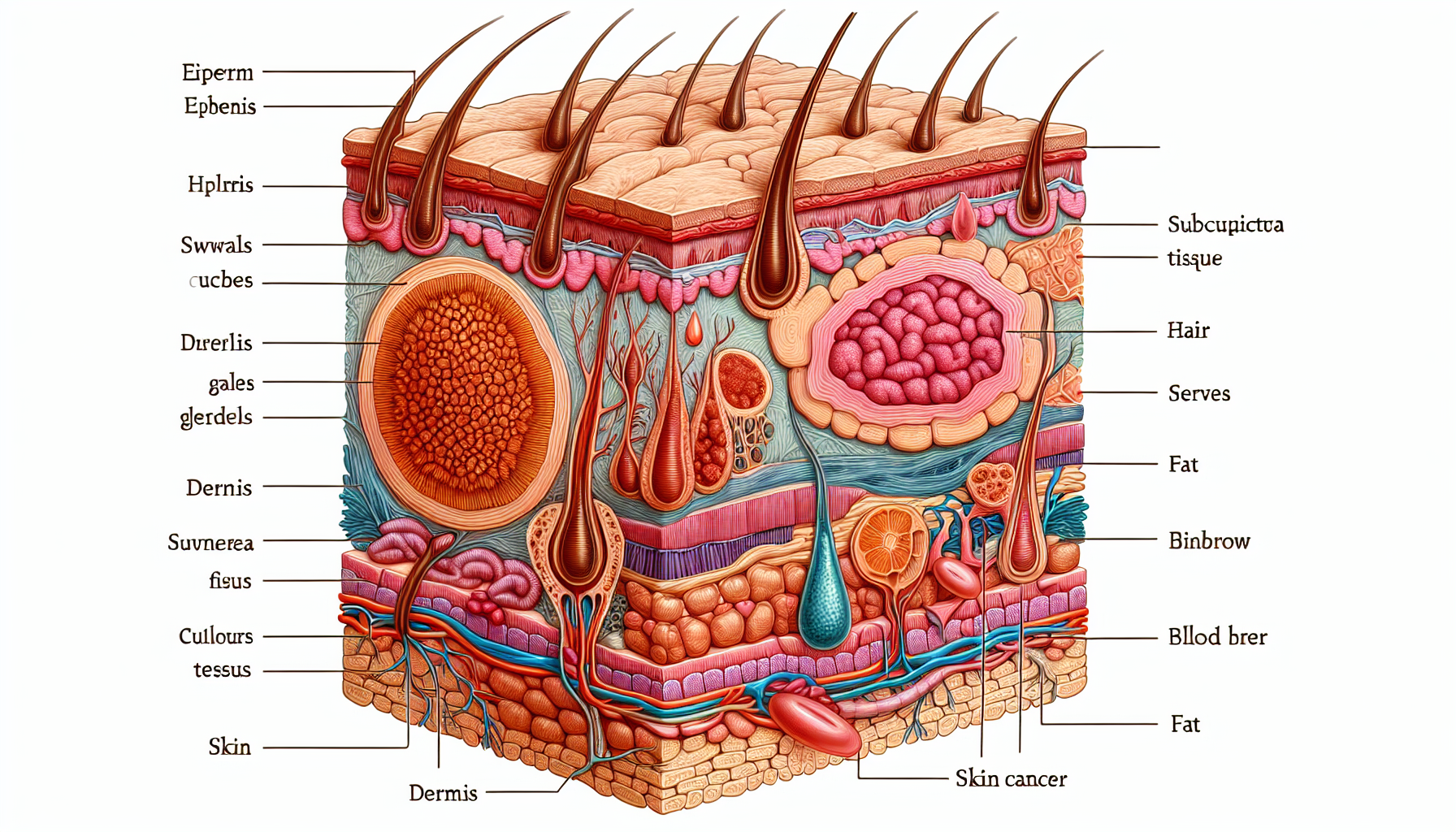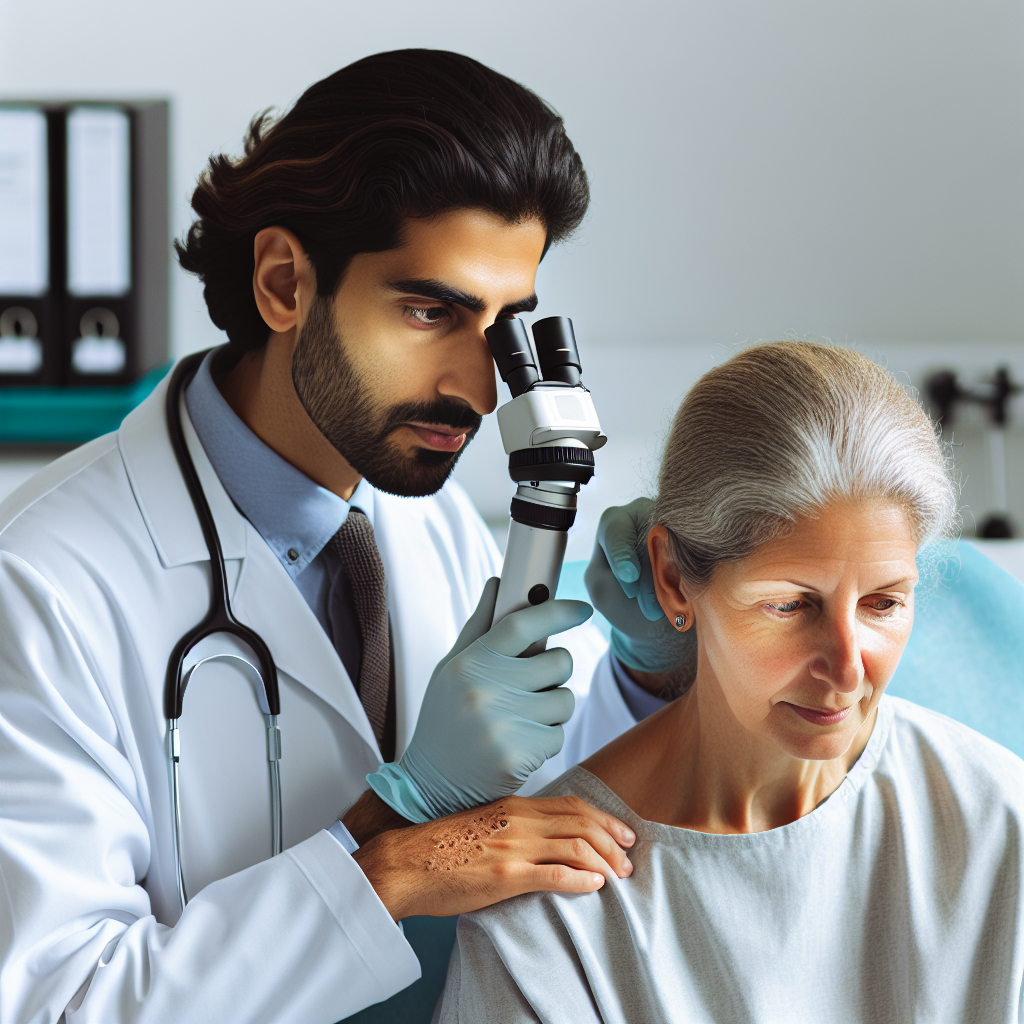Skin cancer is a critical public health concern that affects millions of individuals globally. Its prevalence has been on a steady incline, making education on detection and prevention more important than ever. This comprehensive guide will delve into the types of skin cancer, risk factors, methods of detection, and the most effective strategies for prevention.
Understanding Skin Cancer
Skin cancer arises from the uncontrolled growth of abnormal skin cells and can lead to significant morbidity and mortality if not detected early. The three primary types of skin cancer are:
- Basal cell carcinoma (BCC): The most common form of skin cancer, originating in the basal cells located in the lower part of the epidermis. It often appears as a waxy bump or flat lesion and is typically slow-growing.
- Squamous cell carcinoma (SCC): Arising from the squamous cells, this type of cancer is commonly found on sun-exposed areas of the skin. It may present as a firm red nodule or a flat lesion with a scaly crust.
- Melanoma: The deadliest form of skin cancer, melanoma begins in the melanocytes, which are the cells responsible for skin pigment. It can develop in existing moles or appear suddenly as new dark spots.
Risk Factors
Several factors can increase the risk of developing skin cancer, including:
- Excessive exposure to ultraviolet (UV) radiation from the sun or tanning beds
- Fair skin that burns easily
- A history of sunburns, especially in childhood
- A large number of moles or atypical moles
- A family history of skin cancer
- A personal history of skin cancer
- A weakened immune system
Understanding the interplay between these risk factors is crucial. For instance, the link between UV radiation and skin damage is well-established, which calls for diligent sun protection as a preventive measure.
Detection Methods
Early detection of skin cancer greatly increases the chances of successful treatment. Here are some ways to detect skin cancer:
- Self-examination: Regularly inspecting your skin for any new moles, changes in existing moles, or other skin changes.
- Dermatological check-ups: Scheduling annual skin exams with a dermatologist, especially for individuals with an elevated risk.
- Biopsy: If a suspicious lesion is found, a skin biopsy may be performed to determine if it’s cancerous.
For more detailed information on skin health and regular check-ups, please visit Skin Health Awareness and the Importance of Regular Check-Ups.
Prevention Strategies
Prevention is a powerful weapon against skin cancer. Here’s how you can protect yourself:
- Sun Protection: Use broad-spectrum sunscreen with an SPF of 30 or higher, wear protective clothing, and seek shade during peak sun hours.
- Avoid Tanning Beds: Tanning beds emit harmful UV radiation, increasing the risk of skin cancer.
- Regular Screenings: Early detection through screenings can make a significant difference in outcomes.
- Healthy Diet: A diet rich in antioxidants can help protect your skin. Research has shown that a diet high in fruits and vegetables is beneficial for the skin.
For insights on how a healthy diet can impact your skin, consider reading The Link Between Gut Health and Skin Appearance.
Sunscreen and Protective Measures
Applying sunscreen should be part of your daily routine, not just reserved for days at the beach. When selecting sunscreen, opt for products that offer both UVA and UVB protection. This dual protection is crucial since UVA rays can prematurely age your skin, while UVB rays can burn it. Both types contribute to the risk of skin cancer.
Wearing hats, sunglasses, and UV-protective clothing can also shield your skin from the sun’s rays. It’s important to remember that UV radiation can penetrate clouds, so protective measures are essential even on overcast days.
Lifestyle Choices
Lifestyle choices can also play a significant role in preventing skin cancer. Avoiding tobacco use, limiting alcohol consumption, and maintaining a healthy weight can all contribute to lower cancer risks. Regular exercise is also beneficial for overall health and can indirectly reduce the risk of skin cancer by improving immune function.
For further reading on the benefits of regular exercise, check out Fitness.
The Role of Early Detection
The importance of early detection cannot be overstated. When caught early, many forms of skin cancer are highly treatable. The five-year survival rate for melanoma, when detected before it spreads, is 99%. This rate significantly decreases as the cancer progresses. Hence, being proactive with skin checks and dermatologist visits is vital.
Technological Advancements in Detection
Advancements in technology have provided new tools for detecting skin cancer. Dermoscopy, a non-invasive method that uses a dermatoscope to examine skin lesions, enhances the visibility of skin features not seen with the naked eye, improving diagnostic accuracy.
Furthermore, digital mole mapping and telemedicine are emerging as valuable resources for monitoring skin changes and facilitating remote consultations, respectively.
External Resources for Further Information
For those seeking more in-depth knowledge on skin cancer, the following resources offer valuable information:
- The American Academy of Dermatology provides comprehensive resources on various skin conditions, including skin cancer.
- The Skin Cancer Foundation offers guidance on prevention, detection, and treatment.
- For the latest research on skin cancer, the National Cancer Institute is an excellent resource.
- Melanoma Research Alliance is dedicated to advancing the understanding of melanoma and fostering research.
Conclusion
Skin cancer poses a significant health threat, but with the right knowledge and actions, it can often be prevented and treated effectively. Embrace sun safety, maintain a healthy lifestyle, and consult with healthcare professionals regularly to ensure the best protection for your skin. Remember, the power to reduce your risk starts with you.



